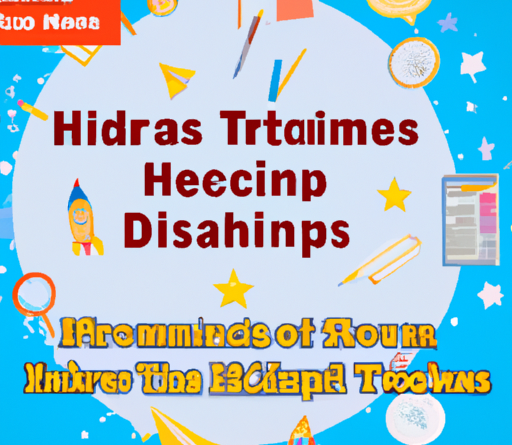Below is an article I bookmarked some time ago now, I think it was at the time of researching into home education, I remember this article very well because it shared how In an experiment, children who were taught less actually learned more.
At the bottom of this article I will link over to the original article, references and more for you.
What I find incredibly interesting about this experiment is that it started in 1929 and yet nearly 100 years later we are still in the same place from an educational point of view.
Enjoy……….
In 1929, the superintendent of schools in Ithaca, New York, sent out a challenge to his colleagues in other cities. “What,” he asked, “can we drop from the elementary school curriculum?” He complained that over the years, new subjects were continuously being added and nothing was being subtracted, with the result that the school day was packed with too many subjects and there was little time to reflect seriously on anything.
This was back in the days when people believed that children shouldn’t have to spend all of their time at school work—that they needed some time to play, to do chores at home, and to be with their families.
So there was a reason back then to believe that whenever something new is added to the curriculum, something else should be dropped.
One of the recipients of this challenge was L. P. Benezet, superintendent of schools in Manchester, New Hampshire, who responded with this outrageous proposal: We should drop arithmetic!
Benezet went on to argue that the time spent on arithmetic in the early grades was wasted effort, or worse. In fact, he wrote: “For some years I had noted that the effect of the early introduction of arithmetic had been to dull and almost chloroform the child’s reasoning facilities.”
All that drill, he claimed, had divorced the whole realm of numbers and arithmetic, in the children’s minds, from common sense, with the result that they could do the calculations as taught to them, but didn’t understand what they were doing and couldn’t apply the calculations to real-life problems. He believed that if arithmetic were not taught until later on—preferably not until seventh grade—the kids would learn it with far less effort and greater understanding.
Think of it.
Today, whenever we hear that children aren’t learning much of what is taught in school, the hue and cry from the educational establishment is that we must therefore teach more of it. If 200 hours of instruction on subject X does no good, well, let’s try 400 hours.
If children aren’t learning what is taught to them in first grade, then let’s start teaching it in kindergarten. And if they aren’t learning it in kindergarten, that could only mean that we need to start them in pre-kindergarten. But Benezet had the opposite opinion.
If kids aren’t learning much math in the early grades despite considerable time and effort devoted to it, then why waste time and effort on it?
Benezet followed his outrageous suggestion with an outrageous experiment. He asked the principals and teachers in some of the schools located in the poorest parts of Manchester to drop the third R from the early grades. They would not teach arithmetic—no adding, subtracting, multiplying or dividing. He chose schools in the poorest neighborhoods because he knew that if he tried this in the wealthier neighborhoods, where parents were high school or college graduates, the parents would rebel.
As a compromise, to appease the principals who were not willing to go as far as he wished, Benezet decided on a plan in which arithmetic would be introduced in sixth grade.
As part of the plan, he asked the teachers of the earlier grades to devote some of the time that they would normally spend on arithmetic to the new third R—recitation. By “recitation” he meant, “speaking the English language.” He did “not mean giving back, verbatim, the words of the teacher or the textbook.”
The children would be asked to talk about topics that interested them—experiences they had had, movies they had seen, or anything that would lead to genuine, lively communication and discussion.
This, he thought, would improve their abilities to reason and communicate logically. He also asked the teachers to give their pupils some practice in measuring and counting things, to assure that they would have some practical experience with numbers.
In order to evaluate the experiment, Benezet arranged for a graduate student from Boston University to come up and test the Manchester children at various times in the sixth grade. The results were remarkable. At the beginning of their sixth-grade year, the children in the experimental classes, who had not been taught any arithmetic, performed much better than those in the traditional classes on story problems that could be solved by common sense and a general understanding of numbers and measurement.
Of course, at the beginning of sixth grade, those in the experimental classes performed worse on the standard school arithmetic tests, where the problems were set up in the usual school manner and could be solved simply by applying the rote-learned algorithms.
But by the end of sixth grade, those in the experimental classes had completely caught up on this and were still way ahead of the others on story problems.
In sum, Benezet showed that kids who received just one year of arithmetic, in sixth grade, performed at least as well on standard calculations and much better on story problems than kids who had received several years of arithmetic training.
This was all the more remarkable because of the fact that those who received just one year of training were from the poorest neighborhoods—the neighborhoods that had previously produced the poorest test results. Why have almost no educators heard of this experiment? Why isn’t Benezet now considered to be one of the geniuses of public education? I wonder.
For decades since Benezet’s time, educators have debated about the best ways to teach mathematics in schools.
There was the new math, the new new math, and so on. Nothing has worked. There are lots of reasons for this, one of which is that the people who teach in elementary schools are not mathematicians. Most of them are math-phobic, just like most people in the larger culture.
They, after all, are themselves products of the school system, and one thing the school system does well is to generate a lasting fear and loathing of mathematics in most people who pass through it. No matter what textbooks or worksheets or lesson plans the higher-ups devise for them, the teachers teach math by rote, in the only way they can, and they just pray that no smart-alec student asks them a question such as “Why do we do it that way?” or “What good is this?”
The students, of course, pick up on their teachers’ fear, and they learn not to ask or even to think about such questions. They learn to be dumb. They learn, as Benezet would have put it, that a math-schooled mind is a chloroformed mind.
In an article published in 2005, Patricia Clark Kenschaft, a professor of mathematics at Montclair State University, described her experiences of going into elementary schools and talking with teachers about math. In one visit to a K-6 elementary school in New Jersey, she discovered that not a single teacher, out of the 50 that she met with, knew how to find the area of a rectangle.
They taught multiplication, but none of them knew that multiplication is used to find the area of a rectangle. Their most common guess was that you add the length and the width to get the area.
Their excuse for not knowing was that they did not need to teach about areas of rectangles; that came later in the curriculum. But the fact that they couldn’t figure out that multiplication is used to find the area was evidence to Kenschaft that they didn’t really know what multiplication is or what it is for. She also found that although the teachers knew and taught the algorithm for multiplying one two-digit number by another, none of them could explain why that algorithm works.
The school that Kenschaft visited happened to be in a very poor district, with mostly African American kids, so at first she figured that the worst teachers must have been assigned to that school, and she theorized that this was why African Americans do even more poorly than white Americans on math tests.
But then she went into some schools in wealthy districts, with mostly white kids, and found that the mathematics knowledge of teachers there was equally pathetic. She concluded that nobody could be learning much math in school and, “It appears that the higher scores of the affluent districts are not due to superior teaching but to the supplementary informal ‘homeschooling’ of children.”
At the present time, it seems clear that we are doing more damage than good by teaching math in elementary schools. Therefore, I’m with Benezet. We should stop teaching it. In my next post—about two weeks from now—I’m going to talk about how kids who don’t go to traditional schools learn math with no or very little formal instruction.
Link to the original article When Less Is More: The Case for Teaching Less Math in School
You can find more articles over on the website Freedom to Learn and I highly recommend you take a look as there are some fantastic posts and facts.
The roles of play and curiosity as foundations for learning.
Peter Gray, Ph.D., is a research professor at Boston College, author of Free to Learn and the textbook Psychology (now in 8th edition), and founding member of the nonprofit Let Grow.
https://www.kimiafarmabali.com/
https://www.kimiafarmabanten.com/
https://www.kimiafarmabatam.com/
https://www.kimiafarmabogor.com/
https://www.kimiafarmajambi.com/
https://www.kimiafarmalampung.com/
toto togel
https://www.kimiafarmamedan.com/
slot gacor
https://www.kimiafarmapalembang.com/
https://www.kimiafarmapontianak.com/
https://www.kimiafarmariau.com/
https://www.kimiafarmasurabaya.com/
situs toto
bento4d
penidabet
situs toto togel
situs togel resmi
bo togel
toto slot
penidabet
data hk
bento4d





